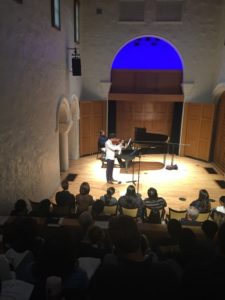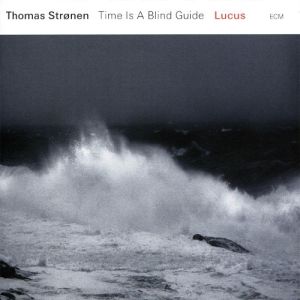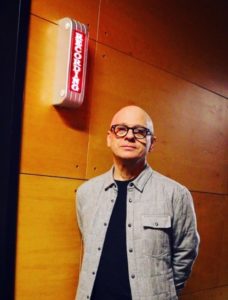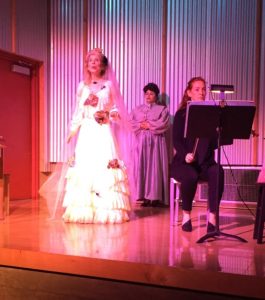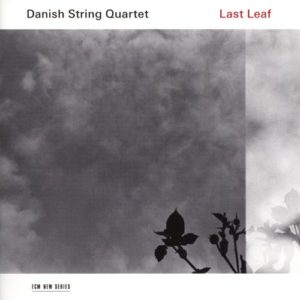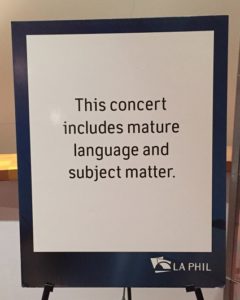 The latest installment of the LA Philharmonic Green Umbrella concert series rolled into Disney Hall on Tuesday, February 20, 2018. Music by Julius Eastman, Anna Thorvaldsdottir and a premiere by Andrew McIntosh were performed. A screening of the iconic anti-war piece L’s G.A. by Salvatore Martirano, with live performance art by Ron Athey as Politico, rounded out the program. Only a few empty seats could be seen as an eager audience settled into place.
The latest installment of the LA Philharmonic Green Umbrella concert series rolled into Disney Hall on Tuesday, February 20, 2018. Music by Julius Eastman, Anna Thorvaldsdottir and a premiere by Andrew McIntosh were performed. A screening of the iconic anti-war piece L’s G.A. by Salvatore Martirano, with live performance art by Ron Athey as Politico, rounded out the program. Only a few empty seats could be seen as an eager audience settled into place.
The first piece was AURA, by Icelandic composer Anna Thorvaldsdottir, performed by the Los Angeles Percussion Quartet. This was played completely in the dark – no stage lights or house lights in the entire space. The LAPQ was just barely visible in dim outline on stage, hunched over their percussion instruments. They wore lighted green wristbands on each arm so that their movements could be seen throughout the hall. AURA began with chiming sounds and a soft rattle followed by what sounded like a bowed vibraphone tone plate. More intriguing sounds followed. The darkness, the moving green lights and the mysterious tones instantly created an atmosphere that gave full rein to the listener’s imagination. It was as if we were observing some secret ritual in the dead of winter in pagan Iceland. Ms. Thorvaldsdottir is well known for building convincing sound worlds out of unusual musical materials, and it would be hard to overstate how effectively this was accomplished here. The playing by the LAPQ – who had performed this piece before – was nonetheless remarkable given the extended techniques involved, the many notes and instructions in the score and the total darkness of the stage. AURA is a captivating experience that, despite the modest musical forces and subdued dynamics, works on the imagination in surprising and powerful ways.
Shasta, by Andrew McIntosh followed, an LA Phil commission and world premiere conducted by John Adams. The stage was filled with a brass ensemble, timpani, percussion, a piano and harp. The composer is an avid hiker and recently climbed Mount Shasta. He writes of this experience: “Mt. Shasta is a unique mountain among California peaks, since it is a massive isolated cone located at the southern end of the Cascade range. Most of California’s major peaks are in the Sierra, which are completely different in nature, since the high peaks in that range are all surrounded by other peaks of similar height. This gives Mt. Shasta panoramic views from the top unparalleled in any other place in California, as well as a peculiarly lonely and melancholy feel.”
McIntosh is a string player by training, but has written for various other ensembles; Shasta is his first major work for brass and the piece proceeds in several short movements. The opening is filled with upward moving scales, arcing glissandos and a strong melody in the trombones so that the feeling is one of climbing a perilous mountain trail. At one point, some bowed xylophone notes sting like a blast of icy air. A trumpet sounds above some sustained tutti chords as if to announce that the summit has been reached, and here the music takes on a more mystical feel with quiet notes in the horns and piano. Towards the finish, the dynamics further soften and muted trumpets provide a strong sense of standing atop the remote heights. Shasta is an evocative and convincing portrait of both the exertion and the exhilaration of mountain climbing, and was received with sustained applause.


